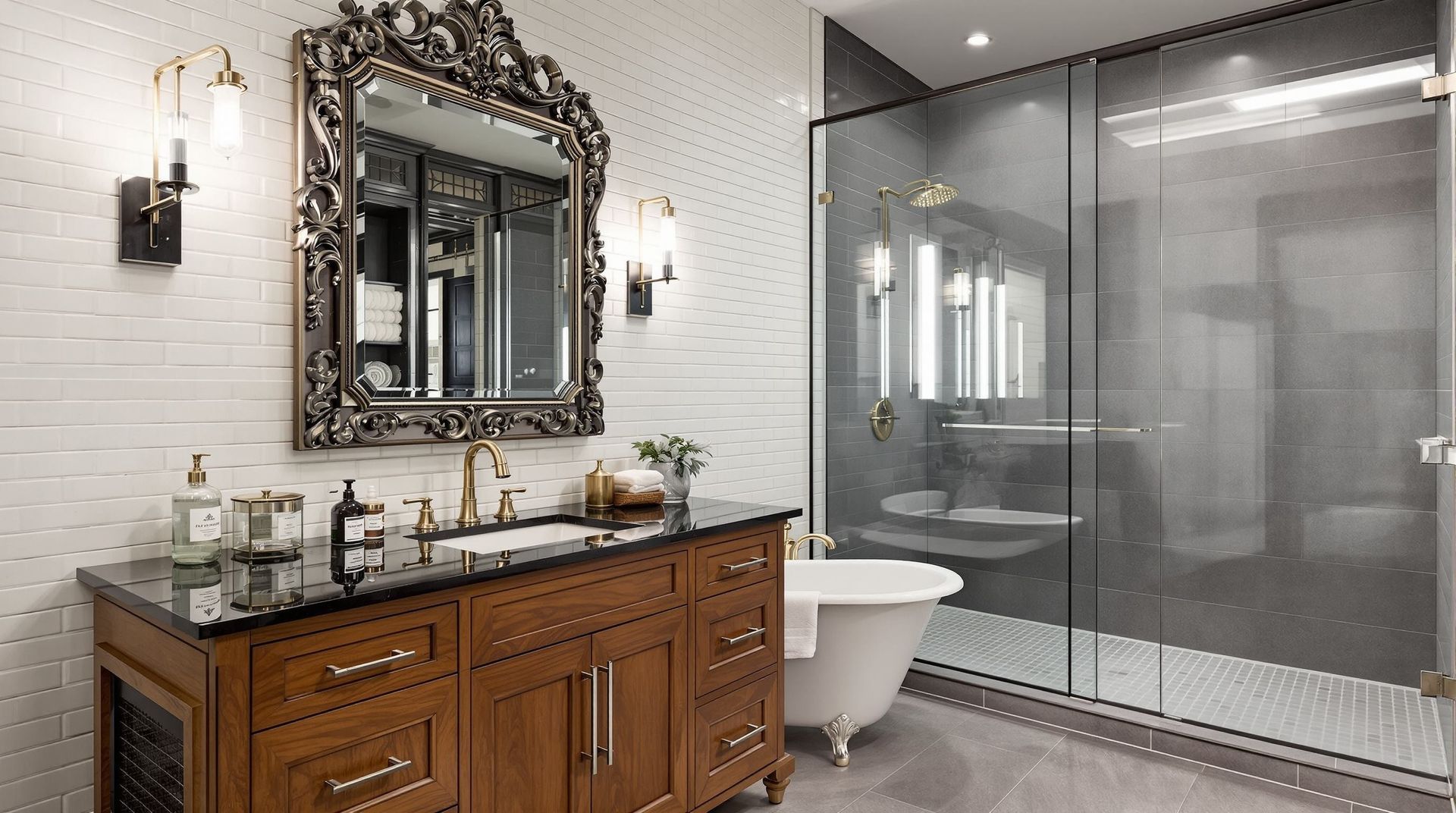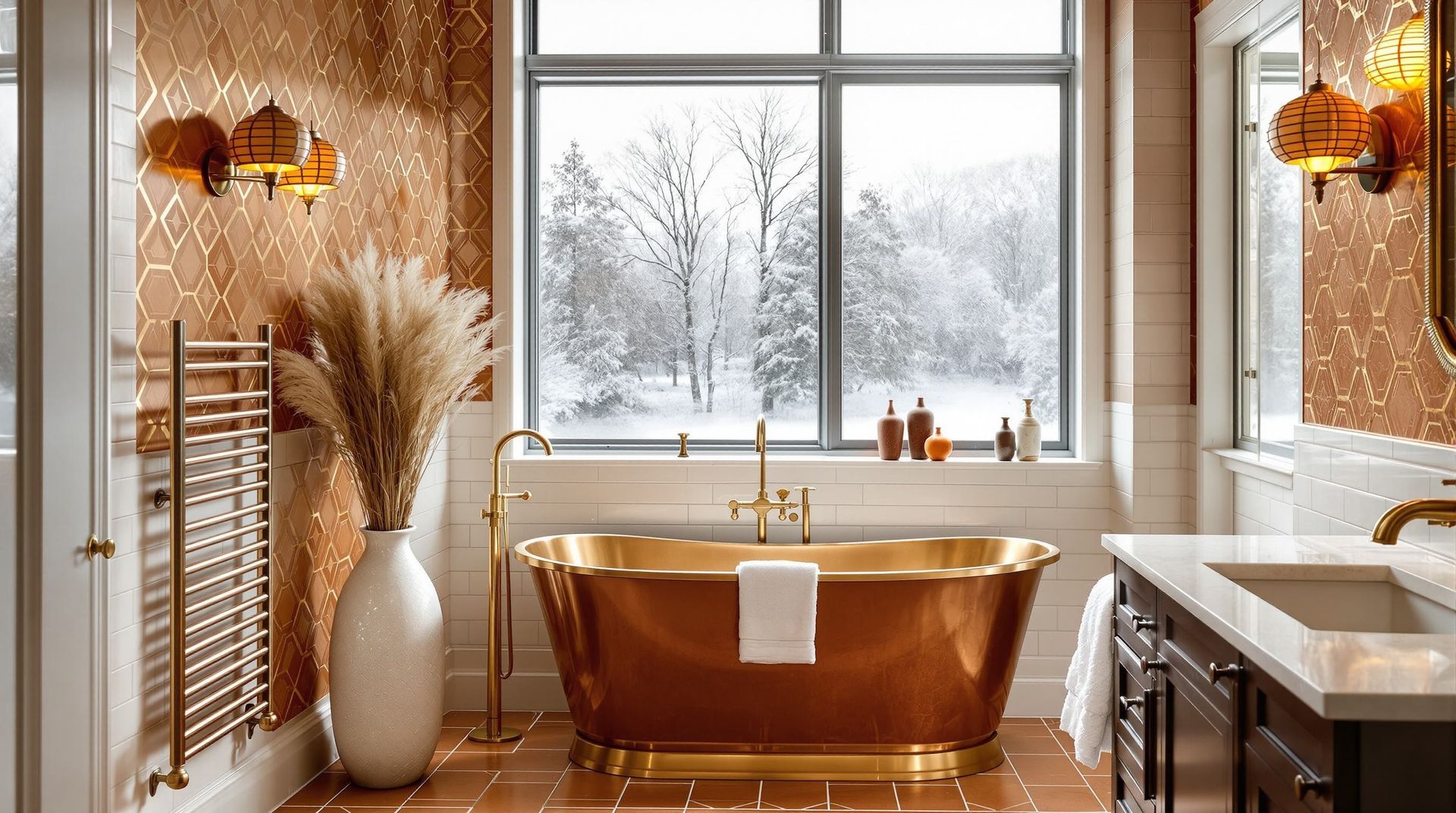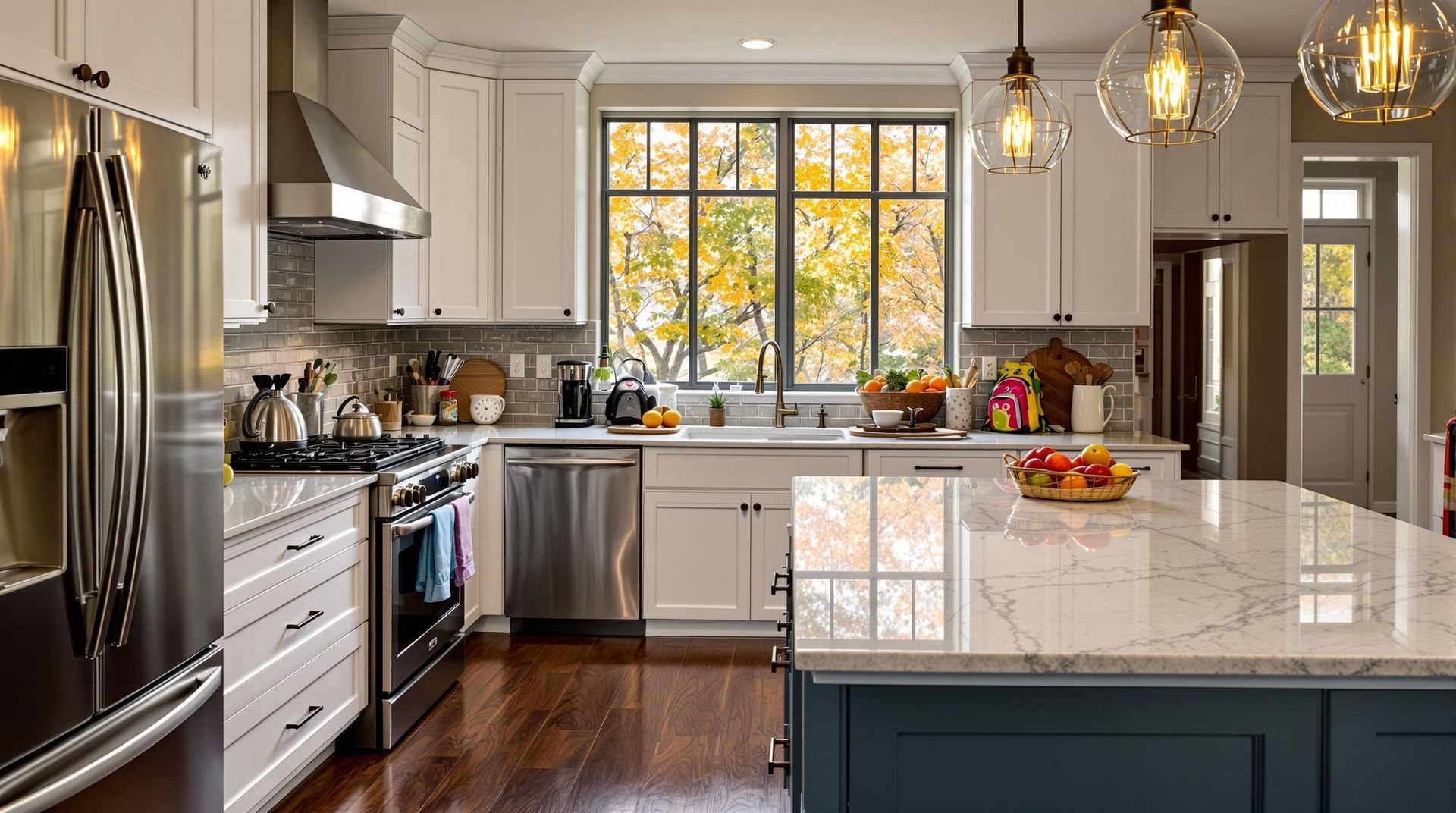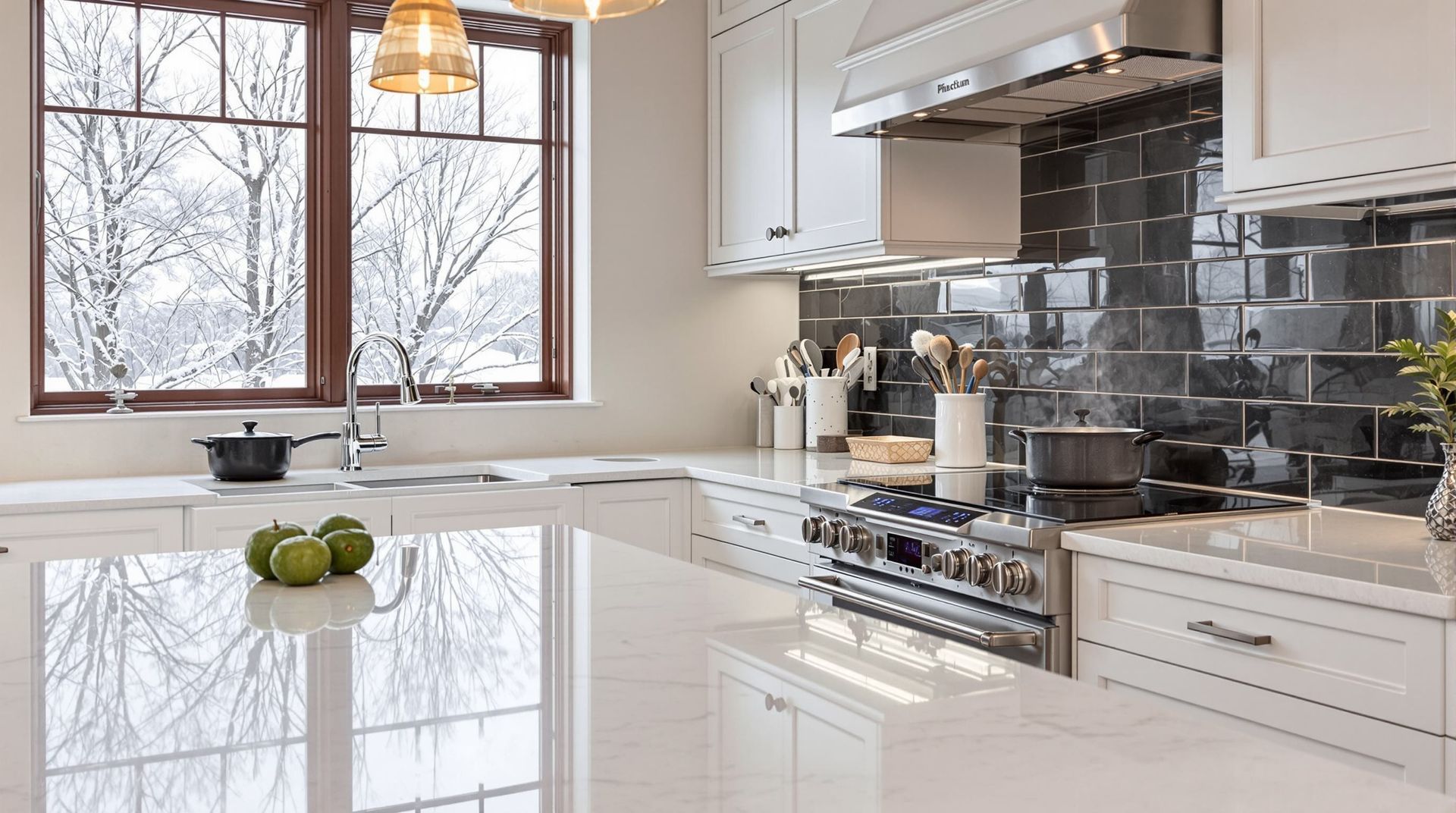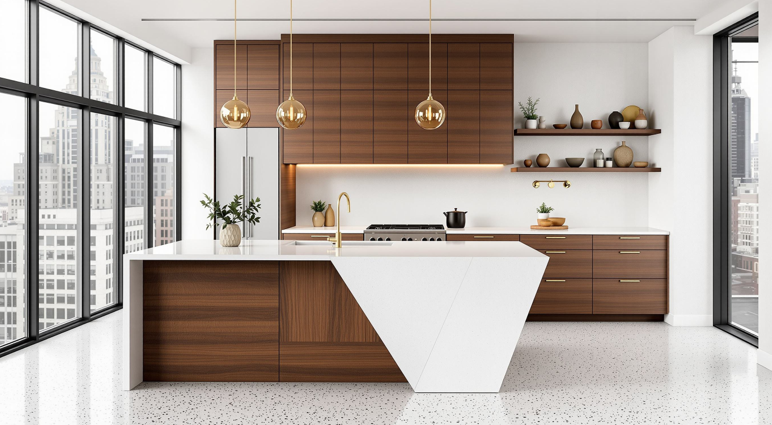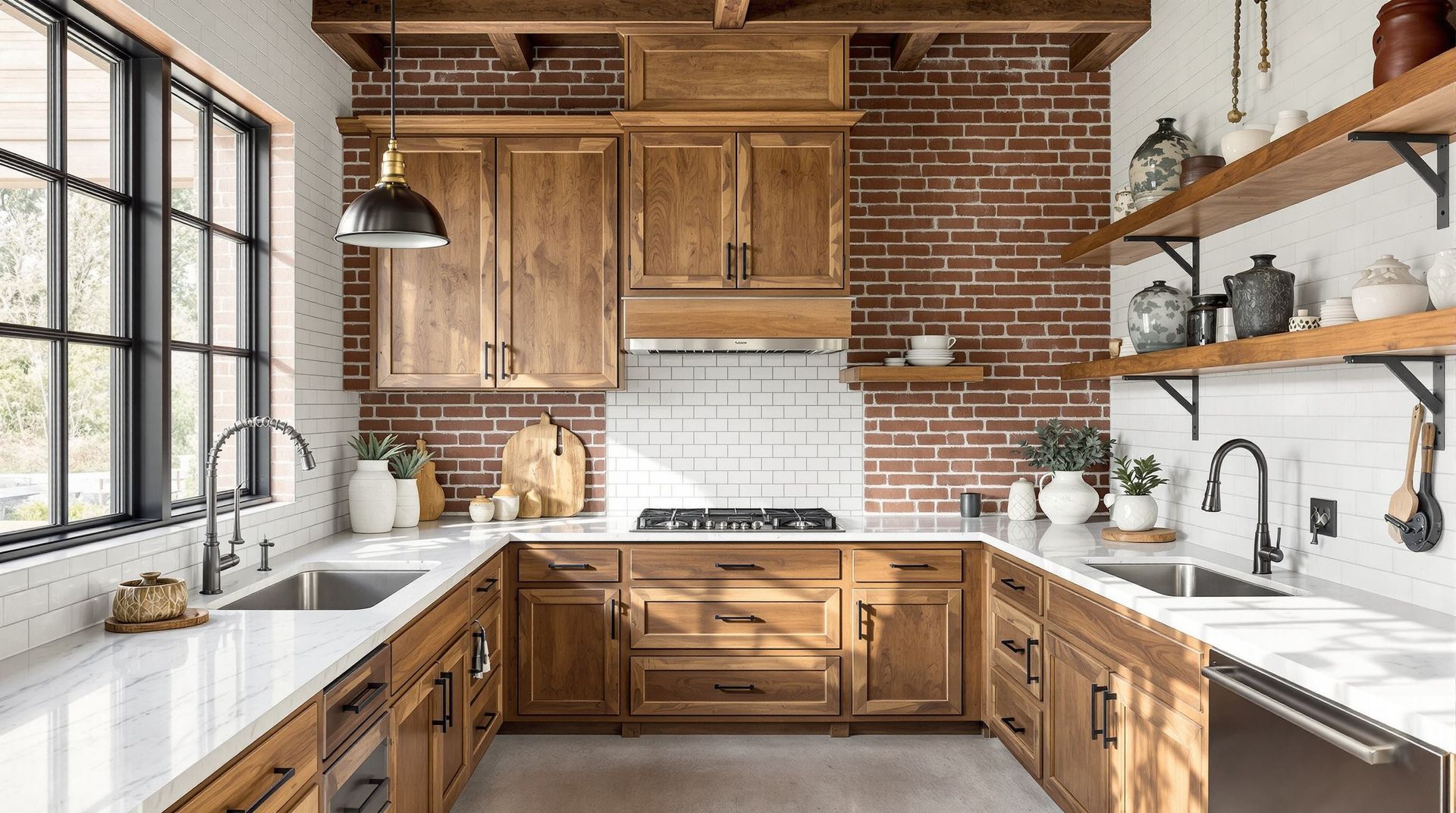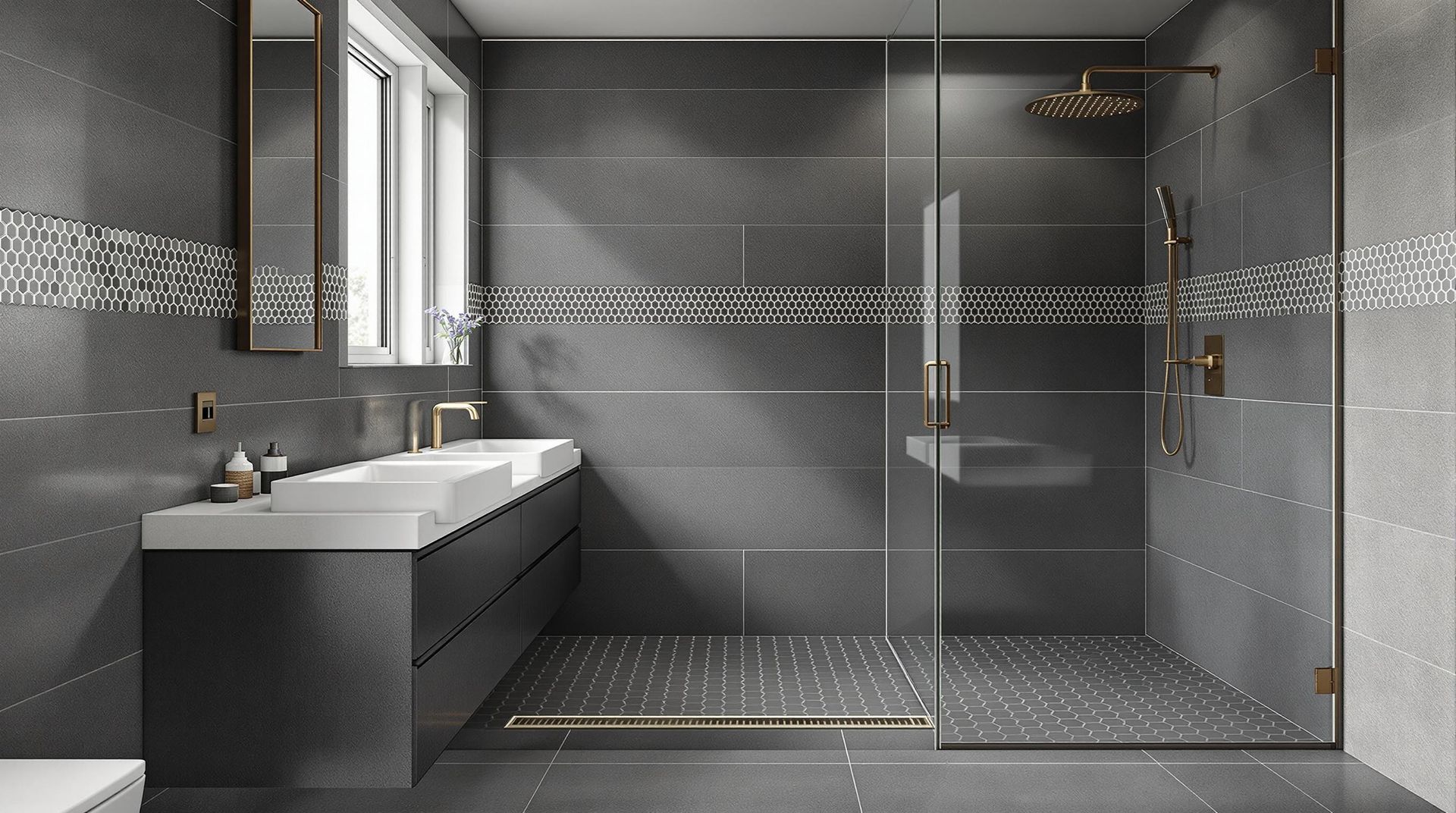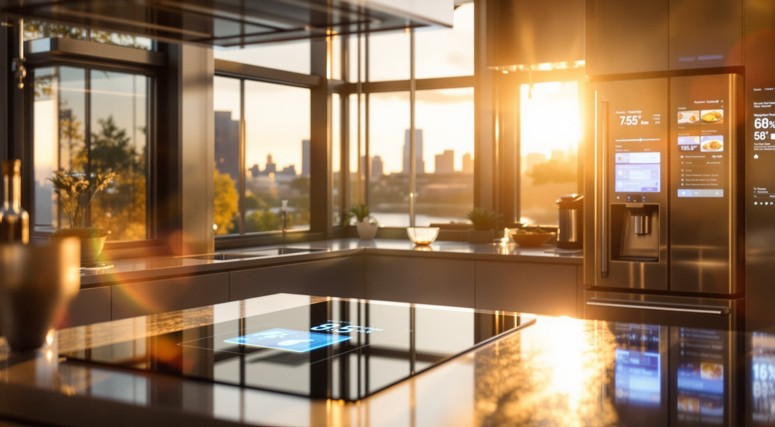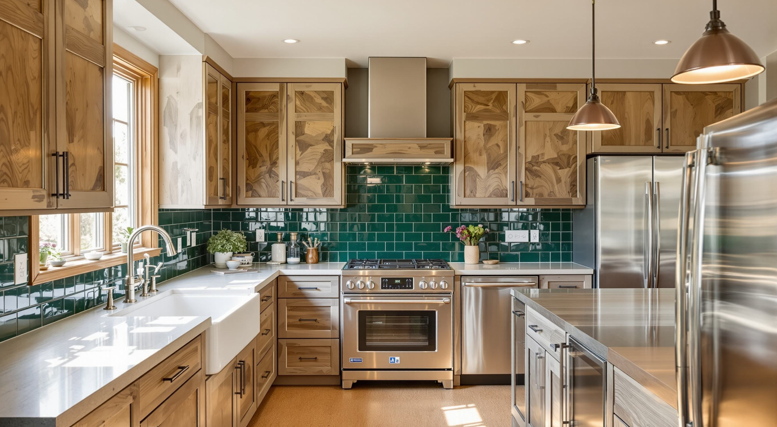Natural Materials in Bathrooms: Bringing the Outdoors In for Pittsburgh Homes
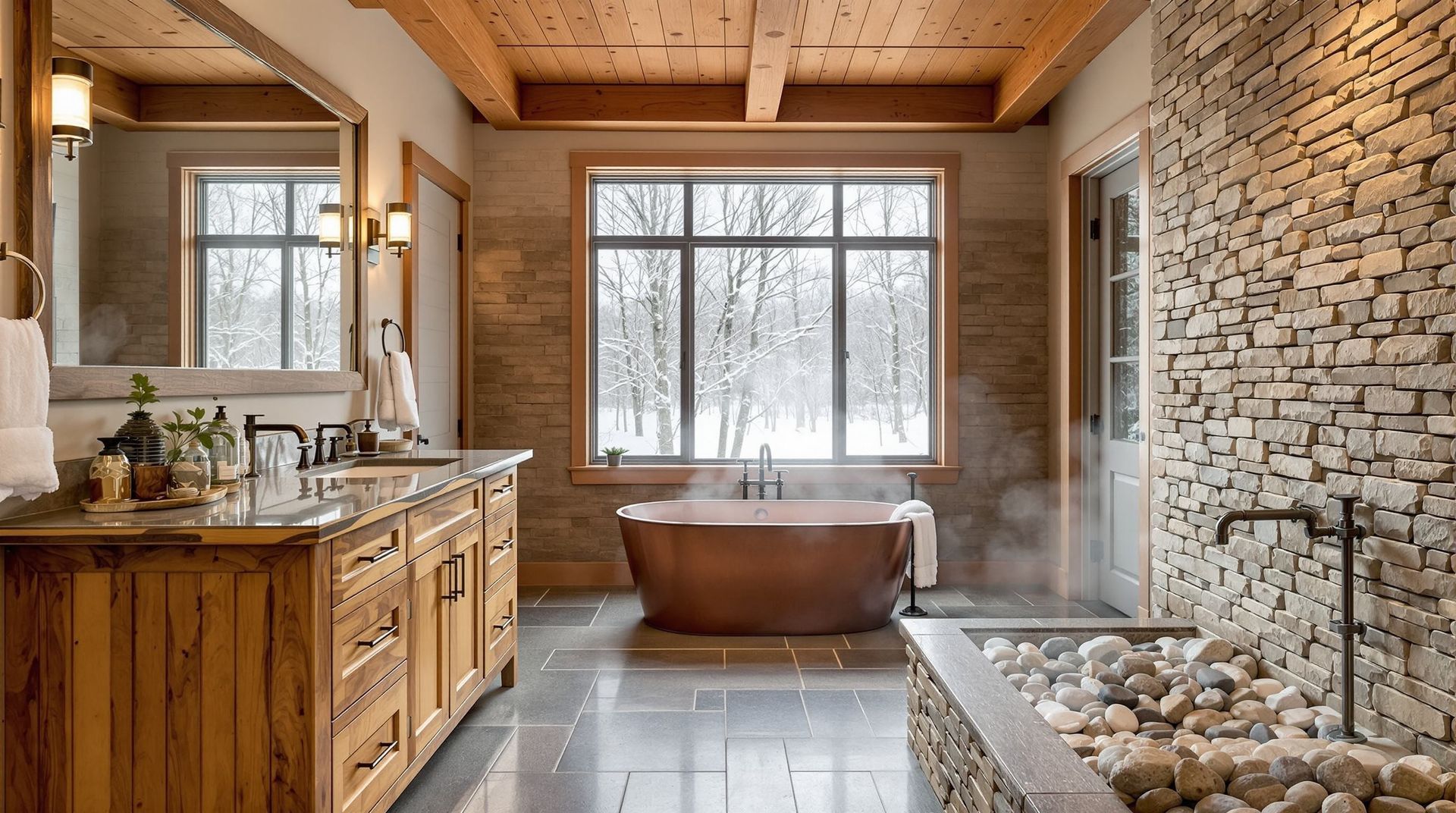
Across Pittsburgh, more homeowners are choosing natural materials to bring warmth, texture, and a sense of calm into their bathrooms. After years of bright whites and industrial gray tones, there’s a clear shift toward organic finishes that make the space feel more personal and restorative.
Bringing the outdoors in means choosing materials that add comfort and authenticity without overwhelming the space. Stone, wood, and natural finishes work beautifully in both traditional and modern homes, whether you live in a Shadyside townhome or a classic brick house in Mt. Lebanon.
In this blog, we’ll explore how natural materials can transform your bathroom into a peaceful retreat. You’ll learn which options work best for moisture-prone spaces, how to blend them with existing architecture, and how to start planning a nature-inspired design for your Pittsburgh home.
Why Natural Materials Are Making a Comeback
Natural materials are timeless for a reason. They add depth and texture that manufactured surfaces can’t replicate. The cool feel of stone or the grain of real wood gives a space a connection to nature that feels instantly relaxing.
In Pittsburgh, where many homes feature vintage details or solid architectural character, natural finishes bridge the gap between old and new. A bathroom that incorporates organic materials feels grounded and comfortable, providing both beauty and long-term value.
These materials also align with today’s growing interest in sustainability and authenticity. Homeowners appreciate surfaces that age gracefully and tell a story over time rather than those that need constant replacement.
Stone Surfaces for Texture and Longevity
Stone adds quiet elegance and durability to any bathroom. Marble, granite, and quartzite remain popular for vanities, shower walls, and flooring. Each offers unique color variations and patterns that make every project feel distinctive.
Quartzite, a natural stone, provides a balance between marble’s elegance and granite’s durability. Marble offers unmatched beauty but benefits from sealing and regular maintenance to keep it looking its best. Engineered quartz, while not a natural material, can complement these surfaces with added stain resistance for busy households.
While truly local stone is rare, many homeowners choose regionally inspired tones that reflect Western Pennsylvania’s landscape. We help clients find combinations that suit their homes while standing up to everyday use.
Wood Accents for Warmth and Balance
Wood instantly softens a space that’s otherwise dominated by tile or stone. Teak, oak, and walnut are excellent choices for bathroom vanities, shelving, or trim because they can be sealed to resist moisture. Their natural grain patterns add comfort and contrast.
Custom cabinetry is an ideal way to feature wood in a bathroom design. Thoughtful details, such as inset panels or open shelving, allow you to bring warmth into the space without sacrificing function. Pairing wood with neutral stone or ceramic tile creates a balanced and timeless look.
Natural Tile and Earthy Finishes
Tile choices can also reinforce a natural aesthetic. Handmade ceramic, terra cotta, and pebble tiles add subtle variation and texture that machine-made options can’t achieve. Soft matte finishes and earthy tones create a sense of calm.
Consider layering materials to create depth. A stone vanity with handcrafted tile walls, for example, combines structure with character. These small design decisions make a bathroom feel collected and personal rather than purely decorative.
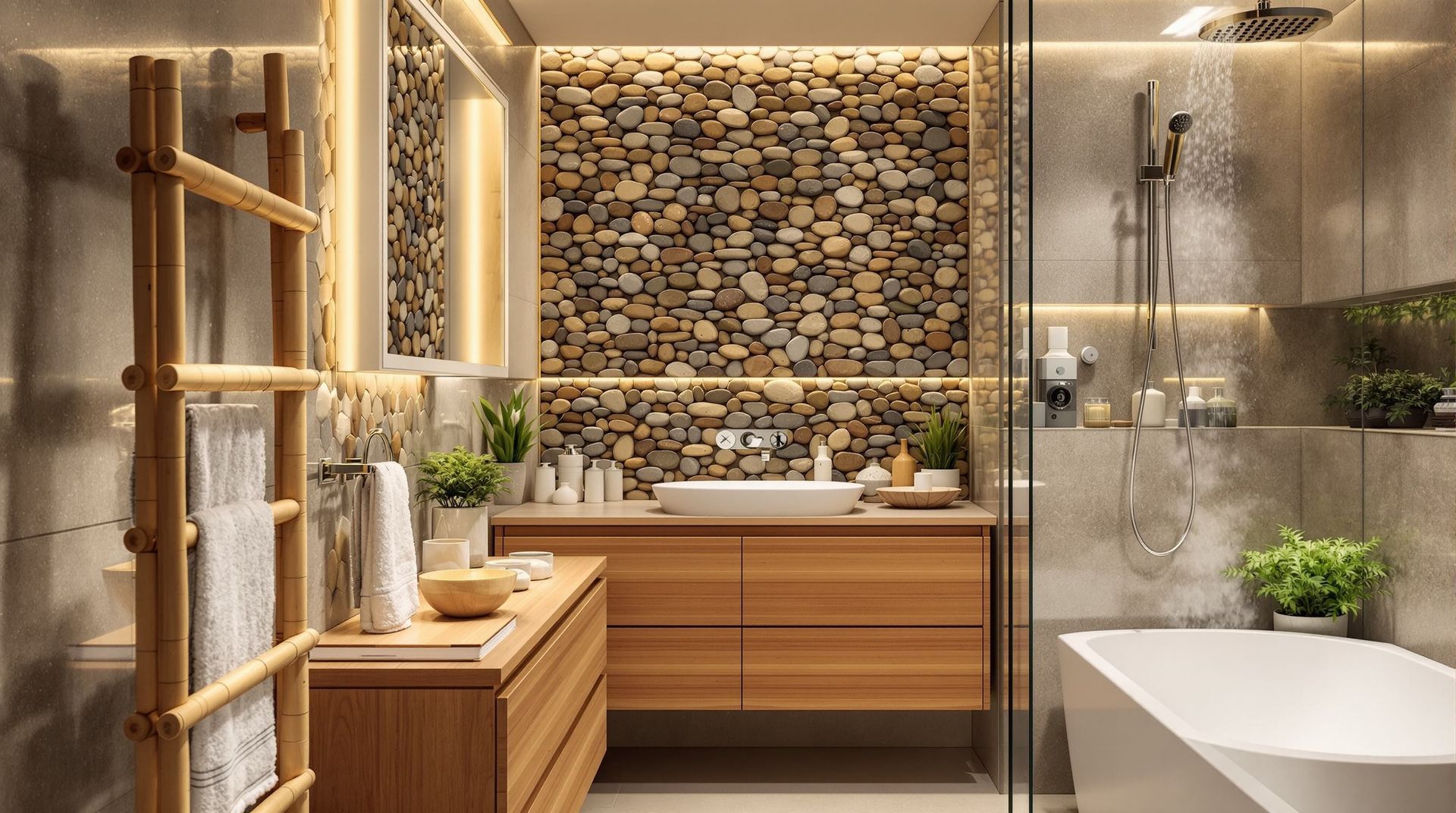
Design Tips for Bringing the Outdoors In
Use Natural Light and Plants Thoughtfully
Natural light enhances every organic surface. Even small changes, like adding a mirror to reflect light or swapping heavy curtains for frosted glass, can brighten the room. If privacy allows, consider a skylight or clerestory window to bring in sunlight from above.
Houseplants also add life and color to the space. Ferns, pothos, and peace lilies all thrive in the humidity of Pittsburgh bathrooms. Placing greenery near a window or on a floating shelf keeps the look fresh without cluttering the space.
Choose a Soothing, Nature-Inspired Palette
Colors drawn from nature help tie the look together. Warm beige, soft white, sage green, and charcoal gray all complement natural materials. These shades create calm while highlighting the beauty of stone and wood surfaces.
Adding tactile elements such as woven baskets, linen towels, or matte black fixtures can further connect the design to its natural inspiration. Small details like these help create a cohesive feel throughout the room.
Blend Function with Feel
A nature-inspired bathroom should be as practical as it is beautiful. Choosing durable finishes, sealing surfaces properly, and ensuring good ventilation are key to long-term success. These details protect your investment and maintain the space’s relaxing feel.
We guide homeowners through this balance during our bathroom remodeling process, helping them select materials that perform well and fit their design vision. With the right planning, natural beauty and everyday function can coexist easily.
Inspiration from Pittsburgh Homes
Pittsburgh’s diverse architecture provides endless design opportunities. Early 20th-century homes in Mt. Lebanon often feature compact bathrooms that benefit from lighter natural finishes like oak or limestone. These materials keep small spaces airy while adding character.
Shadyside and Squirrel Hill rowhouses lend themselves to bolder choices, such as walnut cabinetry or darker slate tile, which complement their historic details. In newer suburban homes, homeowners often use natural textures to add warmth to more open layouts.
Across all styles, the goal is consistency. Natural materials can blend seamlessly with classic moldings, exposed brick, or modern fixtures, creating spaces that feel unified rather than pieced together.
How to Get Started with a Natural Bathroom Redesign
Redesigning a bathroom can feel like a big project, but taking it step by step makes it manageable. These practical tips can help you begin with confidence:
- Gather Inspiration: Collect images of spaces that feel calm and inviting. Focus on color, texture, and layout instead of copying full designs.
- See Materials in Person: Visiting a showroom lets you touch and compare real wood, tile, and stone options. Lighting can change how colors look, so viewing them firsthand helps avoid surprises.
- Plan with a Professional: Discuss your goals, timeline, and lifestyle with a designer who can help balance beauty and functionality. A clear design plan prevents costly adjustments later.
Our team at Jacob Evans works closely with homeowners to explore materials and create cohesive designs that match both personal style and Pittsburgh’s architectural character. These early conversations set the stage for a smooth remodeling experience and lasting results.
Conclusion
A bathroom designed with natural materials is more than just a visual update. It becomes a retreat that reconnects you to nature, even in the heart of the city. Whether through the warmth of wood, the strength of stone, or the subtle textures of tile, these details create calm and comfort every day.
At Jacob Evans, we take pride in helping Pittsburgh homeowners create spaces that balance natural beauty with thoughtful design. With the right materials and expert guidance, your bathroom can become a timeless, restorative part of your home.



